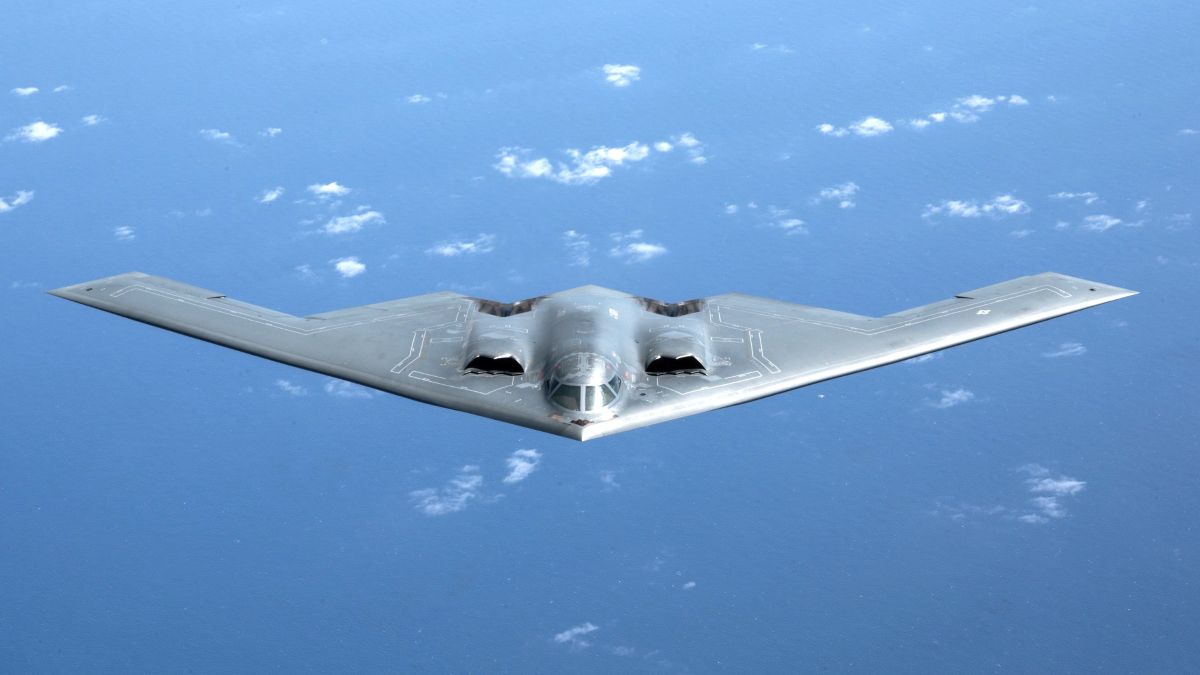B‑2 Stealth Bombers Deployed to Guam as Global Tensions Rise Over Iran Conflict
Strategic Moves Reflect Growing Global Tensions
In a significant shift of military assets, the United States has repositioned B‑2 Spirit stealth bombers to Guam, a critical strategic location in the western Pacific. This move comes as global attention intensifies on the escalating conflict between Israel and Iran, with the U.S. closely monitoring the situation while weighing potential involvement.
While no official confirmation links the bomber deployment directly to Middle East operations, defense analysts suggest the move is a clear signal of readiness and deterrence as tensions rise across multiple regions.
The Power of the B‑2 and Its Potential Role
The B‑2 bomber, known for its stealth capabilities and long-range precision strike potential, is one of the most advanced aircraft in the U.S. military arsenal. It is capable of carrying the GBU‑57 Massive Ordnance Penetrator, a 30,000-pound bunker-busting bomb designed to target deeply buried infrastructure—such as Iran’s fortified nuclear facility at Fordow.
The deployment of these bombers to Guam puts them within operational reach of both the Middle East and Asia-Pacific theaters, offering maximum flexibility without disclosing specific intentions. The Pentagon has not released details on how many B‑2 aircraft have been relocated or any forward orders beyond Guam.
Diego Garcia and Future Possibilities
There is also speculation about whether the B‑2s will continue their movement to the U.S.-British base on Diego Garcia, an island in the Indian Ocean with a history of strategic military operations. Diego Garcia previously hosted B‑2 bombers until they were replaced by B‑52s last month.
The base is seen as ideal for launching missions in the Middle East, and any future repositioning there would further underscore the United States’ preparedness to act swiftly if required.
Regional Escalation and Diplomatic Deadlock
Meanwhile, the conflict between Israel and Iran has entered a volatile phase. Israel announced the killing of a high-ranking Iranian military commander amid ongoing aerial clashes. Iran, on the other hand, has firmly stated that it will not enter into any nuclear negotiations while under threat, maintaining that its atomic program is for peaceful purposes.
Israel argues that Iran is on the verge of producing nuclear weapons, citing intelligence assessments as justification for its recent offensive strikes.
The Waiting Game and White House Deliberation
Former President Donald Trump, who remains a central figure in American politics, recently stated that he would take up to two weeks to decide whether the United States should formally join Israel in its military operations. He emphasized the importance of allowing time for diplomacy to work and for parties involved to “come to their senses.”
While no official order has been given to engage in direct military action, the repositioning of strategic assets—bombers, tanker aircraft, and an aircraft carrier moving from the Indo-Pacific toward the Middle East—indicates that the United States is building a foundation for rapid deployment if diplomatic efforts fail.
Guam’s Crucial Role in Global Defense Strategy
Located in the western Pacific, Guam has long served as a key forward-operating base for the U.S. military. It provides a launch point for both deterrent posturing and combat operations in Asia and beyond. With B‑2 bombers now stationed there, Guam once again finds itself at the heart of a global defense strategy built on speed, reach, and strategic ambiguity.
As world leaders weigh options and tensions remain high, all eyes are on the next steps from Washington, Tehran, and Tel Aviv. The presence of American bombers in Guam doesn’t confirm military intervention—but it certainly shows that the option is now fully on the table.
The coming days will be critical in determining whether diplomatic channels prevail or if military operations intensify. While the current buildup does not guarantee action, it unmistakably signals that the U.S. is prepared for all scenarios.
With stealth bombers on alert, tankers refueled, and aircraft carriers en route, the world stands at a crossroads—hoping that preparation and power might ultimately bring pressure for peace.
